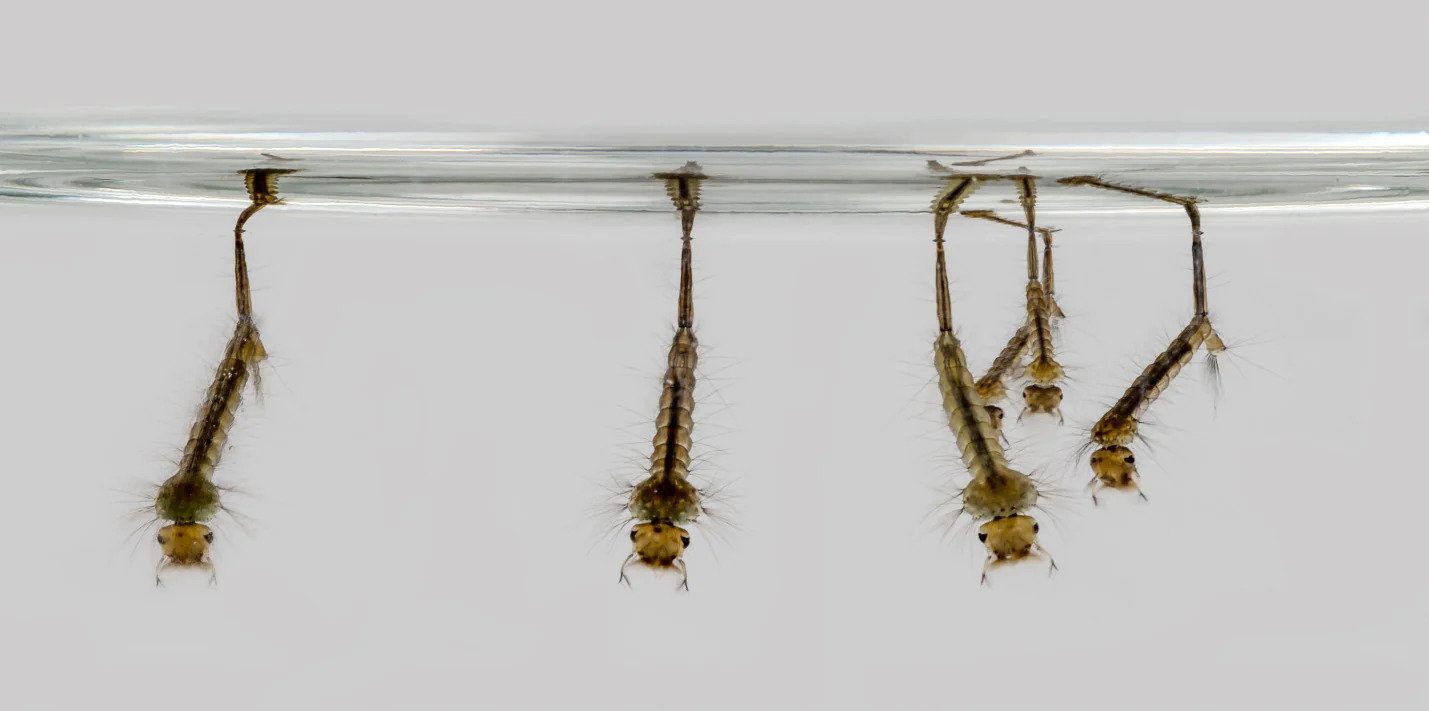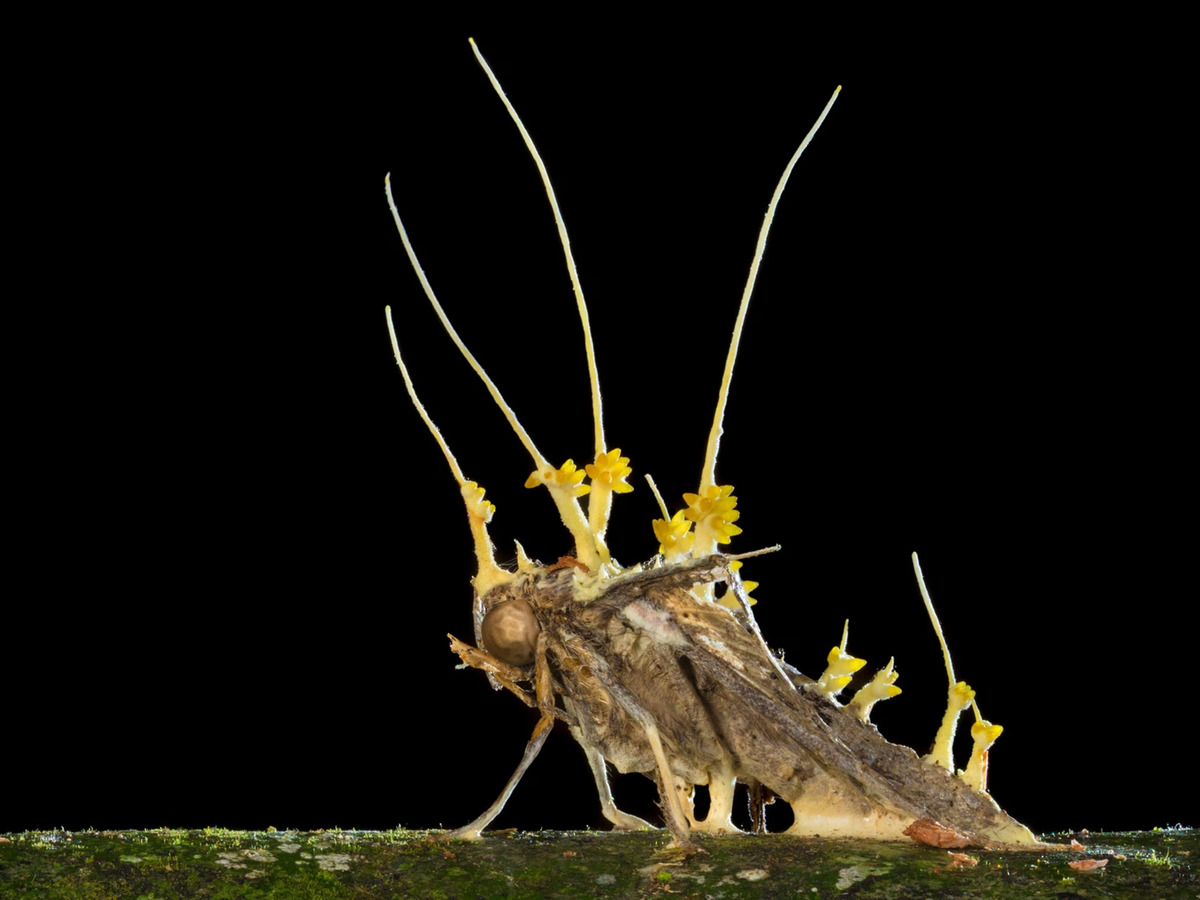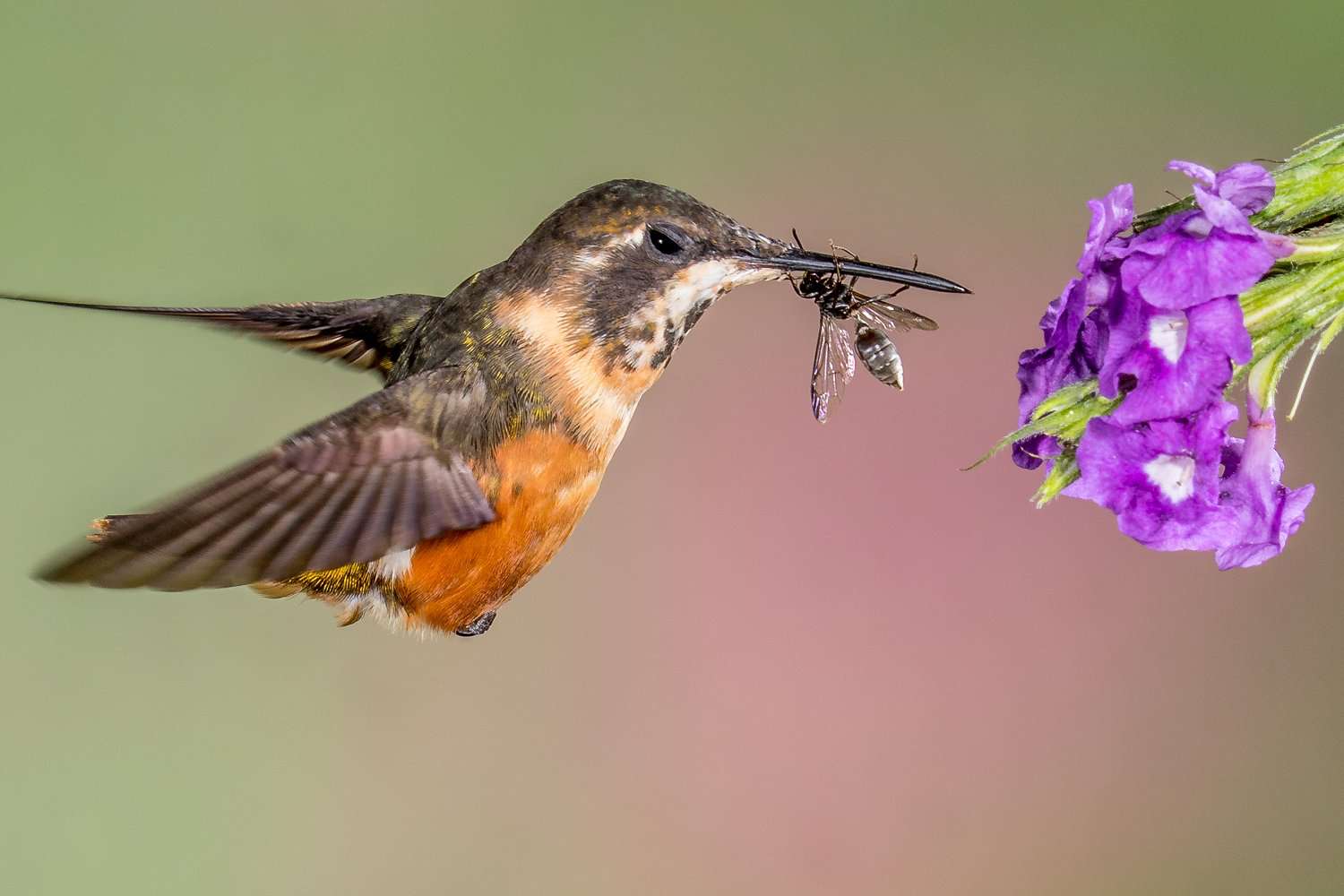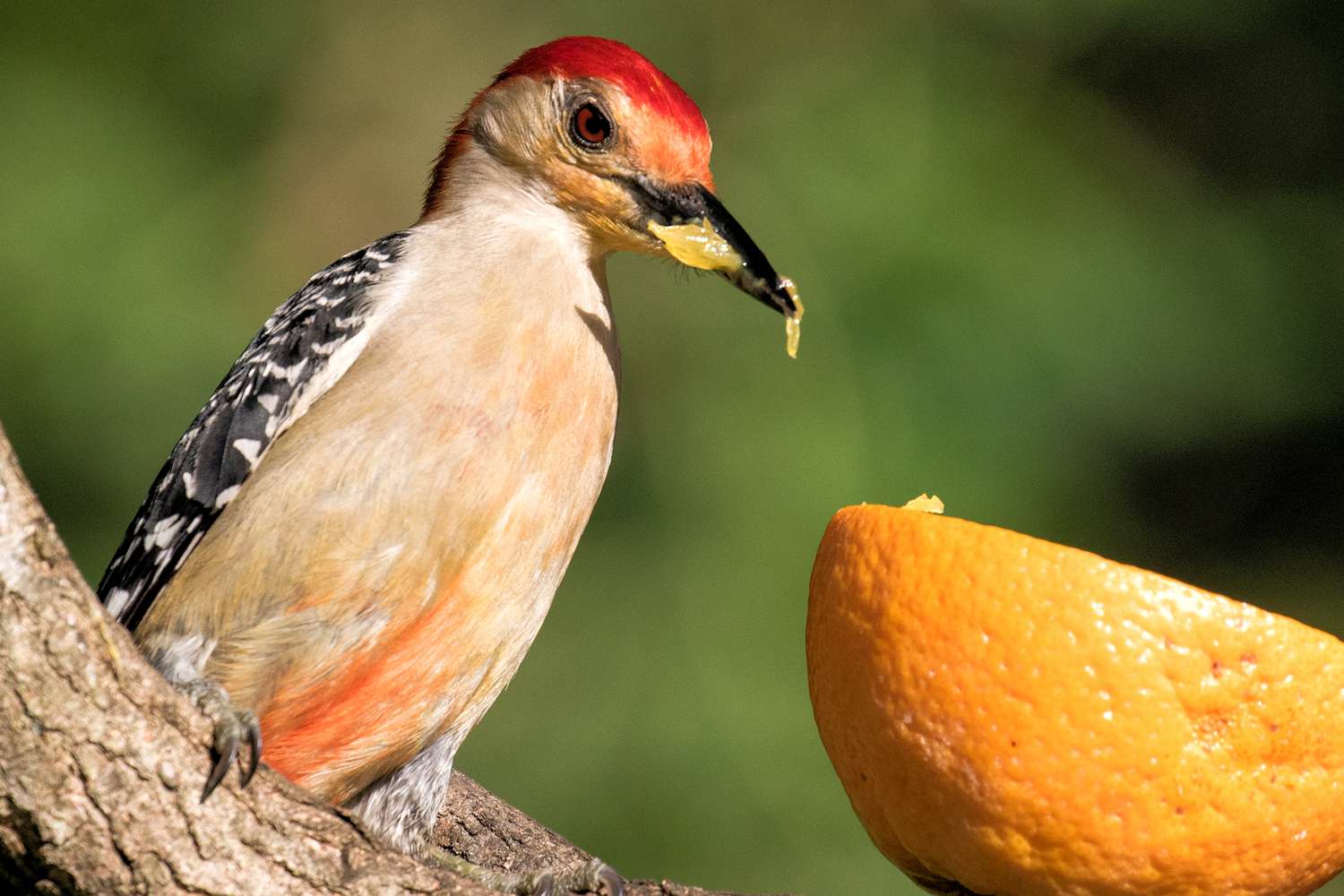Home>Gardening News and Trends>Latest News>What Do Insects Do When It Rains
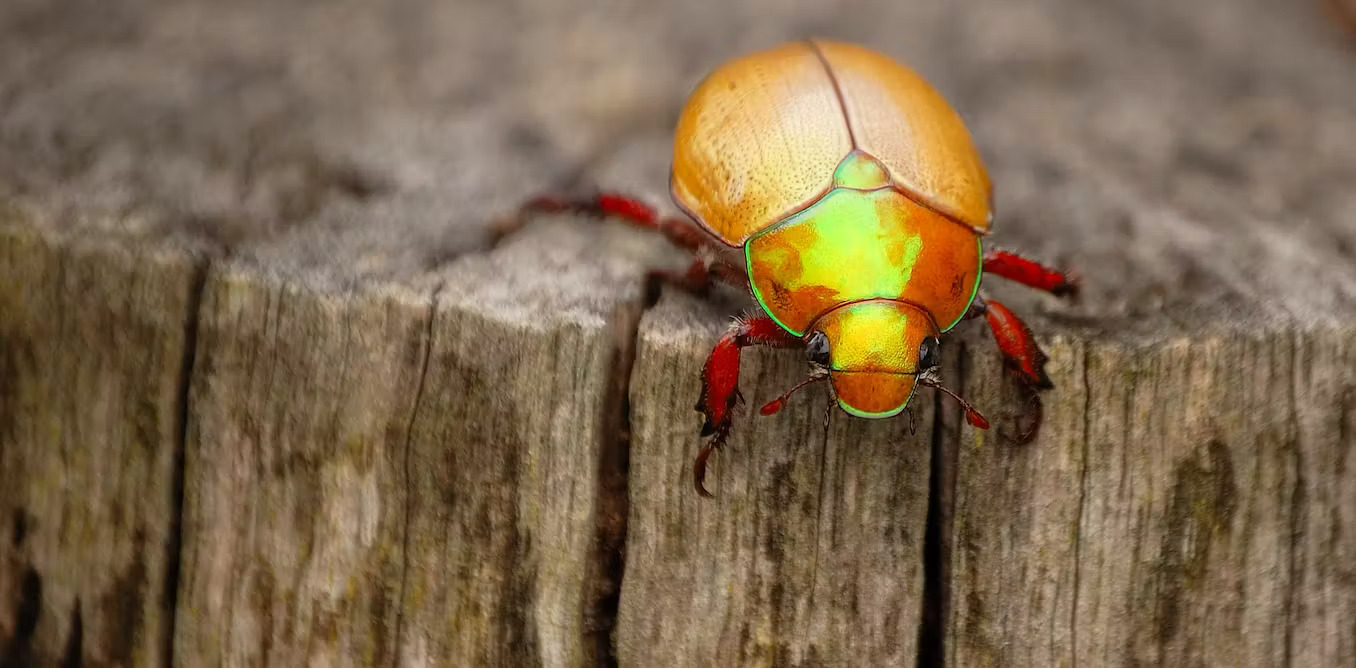

Latest News
What Do Insects Do When It Rains
Modified: January 22, 2024
Discover the fascinating behaviors of insects during rain showers. Stay updated with the latest news on how insects adapt to wet weather conditions.
(Many of the links in this article redirect to a specific reviewed product. Your purchase of these products through affiliate links helps to generate commission for Chicagolandgardening.com, at no extra cost. Learn more)
Table of Contents
Introduction
Rain is a natural phenomenon that has a profound impact on various aspects of life, including the insect world. Insects, which account for the largest portion of animal species on Earth, have developed remarkable adaptations to weather changes, including rain. From seeking shelter to adjusting their activity levels, insects have evolved unique behaviors to survive and thrive during rainy periods. Understanding how insects respond to rain can provide valuable insights into their ecological roles and the overall dynamics of ecosystems.
As tiny creatures with delicate bodies, insects are highly susceptible to the effects of rain. Rainfall can disrupt their feeding and mating activities, as well as potentially damage their fragile wings and exoskeletons. Therefore, insects have evolved a wide range of behavioral and physiological adaptations to deal with rainy conditions. These adaptations help insects minimize the negative impacts of rain and maximize their chances of survival.
By examining the different strategies that insects employ during rainy periods, we can gain a deeper understanding of their resilience and ingenuity. In this article, we will explore the fascinating ways in which insects respond to rain. We will delve into the various behavioral and physiological adaptations that allow them to navigate through wet conditions and ensure their continued existence. From seeking shelter to reducing activity levels and employing unique reproductive strategies, insects have developed incredible mechanisms to overcome the challenges brought on by rainfall.
Furthermore, we will discuss the impact of rain on insect populations and the broader ecological implications of these effects. Rain can both positively and negatively influence insect populations, altering species compositions and ecological dynamics. By examining the relationship between rain and insects, we can appreciate the intricate web of life and gain insights into the delicate balance of nature.
Join us as we embark on a journey into the fascinating world of insects and discover how these small creatures adapt and thrive when the rain starts to fall.
Importance of Rain to Insects
Rain plays a crucial role in the lives of insects, serving both as a source of opportunity and as a challenge. It provides essential resources such as water, which is vital for their survival, reproduction, and overall ecological balance. Insects have evolved to rely on rain in various ways, and its presence or absence can significantly impact their behavior, abundance, and distribution.
One of the primary benefits of rain for insects is the availability of water sources. Insects must stay hydrated to function properly, and rain provides them with a readily accessible supply of this life-sustaining resource. Whether it’s drinking water droplets or absorbing moisture from vegetation, insects utilize rain to replenish their body fluids and prevent dehydration.
Additionally, rain stimulates plant growth and, consequently, increases the availability of food resources for insects. The moisture from rain helps plants produce nectar, pollen, and other plant tissues that insects rely on for nourishment. This abundance of food not only supports individual insect survival but also contributes to the overall health of insect populations and their ecosystems.
Rain also triggers breeding and reproductive activity among insects. Many insect species synchronize their mating behavior with rainfall events. The moisture-rich environment created by rain stimulates the emergence of reproductive structures, such as flowers, which act as attractants to mates. In some cases, rain can directly influence the mating behavior of insects by triggering specific reproductive behaviors or synchronizing mating swarms.
Furthermore, rain can act as a dispersal mechanism for insects. Insects, particularly winged species, take advantage of rain events to disperse and colonize new habitats. The droplets of rain can carry them over long distances, allowing for the spread of species and genetic diversity.
However, the importance of rain to insects is not limited to its positive effects. Rainfall can also present challenges and threats to their survival. Heavy downpours can create flooding, wash away insect habitat, and disrupt their normal activities. Excessive rain can lead to waterlogged conditions that restrict insect movement and make it difficult for them to breathe. Additionally, raindrops can physically damage delicate body parts and impair flight capabilities, making insects more vulnerable to predation and other risks.
In summary, rain is a vital component of the insect ecosystem and plays a multifaceted role in their lives. It provides water for hydration, stimulates plant growth and food availability, triggers reproductive behaviors, and facilitates dispersal. However, it can also pose challenges and risks to insect survival. Understanding the importance of rain to insects is essential for comprehending their ecological relationships, population dynamics, and overall contributions to the natural world.
Behavioral Adaptations During Rainy Periods
Insects have developed various behavioral adaptations to cope with the challenges posed by rainy periods. These adaptations help them seek shelter, reduce activity levels, and ensure their survival in wet conditions. By altering their behavior, insects can minimize exposure to rain and its potential detrimental effects.
One common behavioral adaptation exhibited by insects during rainy periods is the search for shelter. Insects seek out protected areas such as leaf undersides, tree bark, or crevices to escape the rain. They may also take refuge in burrows, underground tunnels, or plant structures that provide cover from rainfall. By finding shelter, insects can shield themselves from direct contact with raindrops and reduce the risk of physical damage to their bodies.
Another behavioral adaptation observed in insects during rainy periods is the reduction of activity levels. Insects tend to decrease their movement and remain stationary during heavy rainfalls. This reduction in activity helps conserve energy and minimizes exposure to the elements. Insects may hunker down in their shelters, fold their wings tightly, and wait for the rain to subside before resuming their normal activities.
Some insect species have developed unique behaviors to take advantage of rain as a source of moisture. For example, desert-dwelling insects employ a behavior known as “rain-waking.” During rare rain events in arid regions, dormant insects emerge from their underground burrows to mate, feed, and lay eggs. They seize this opportunity to utilize the temporary abundance of water resources and complete their life cycles.
In addition to seeking shelter and reducing activity levels, insects adapt their feeding behaviors during rainy periods. Some insects take advantage of the increased availability of water droplets on vegetation and drink directly from them. Others may focus on consuming particular parts of plants, such as flower nectar or leaf tissue, that are more accessible and provide a concentrated source of nutrients during rainy periods.
Moreover, insects exhibit behaviors that enable them to navigate wet surfaces more effectively. Hydrophobic insects, such as water striders and beetles, have evolved specialized structures on their bodies that repel water and enable them to stay afloat and move across water surfaces. This adaptation allows these insects to continue their normal activities and capture prey despite the presence of rain.
In summary, insects display a range of behavioral adaptations during rainy periods to ensure their survival and minimize the negative impacts of rain. These adaptations include seeking shelter, reducing activity levels, altering feeding behaviors, and developing specialized structures for navigation on wet surfaces. By adjusting their behavior to the changing weather conditions, insects increase their chances of survival and optimize their use of available resources.
Seeking Shelter
Seeking shelter is a crucial behavioral adaptation exhibited by insects during rainy periods. It allows them to protect themselves from the rain and mitigate the potential risks associated with exposure to excessive moisture. Insects employ various strategies to find suitable shelter that offers cover and minimizes the impacts of rain on their bodies.
One common shelter-seeking behavior among insects is taking refuge underneath plant materials. Leaf undersides, flower petals, and the spaces between plant parts provide natural shelters that shield insects from rainfall. Insects may cling to these surfaces or wedge themselves into small crevices to avoid direct contact with raindrops. Some insects, such as beetles and caterpillars, even construct protective structures like leaf tents or silk cocoons to create a safe haven from the rain.
Another preferred sheltering option for insects is hiding in tree bark or cracks in rocks. These locations provide a dry and secure space where insects can wait out the rain. Bark crevices offer protection from raindrops while also shielding insects from predators, making them an ideal refuge during wet weather.
Insects may also seek shelter underground to avoid the rain’s impact. Burrowing species, like ants and termites, retreat to their nests or tunnels when rain begins. These subterranean shelters provide insulation from rainfall, maintaining a drier microenvironment for the insects. The soil acts as a natural barrier against water infiltration, ensuring that insects remain protected and dry until the rain subsides.
Additionally, insects may utilize human-made structures as shelter. Buildings, structures, and infrastructure, such as houses, sheds, or even vehicles, offer insects protection from the rain. Cracks in walls, gaps in windows, and other openings provide entry points for insects seeking refuge. While this behavior may bring insects into closer contact with humans, it demonstrates their adaptability and resourcefulness.
Some social insect species, like bees and wasps, exhibit collective sheltering behaviors during rain. They may retreat to their hives or nests, clustering together to create a protective barrier. The collective body heat generated by these insects helps regulate the temperature and humidity within the colony, creating a more stable microclimate during rainy periods.
Overall, seeking shelter is an essential behavioral adaptation that enables insects to weather the storm during rainy periods. By finding suitable shelters such as plant materials, tree bark, underground burrows, or human-made structures, insects can minimize their exposure to raindrops and reduce the risks associated with wet conditions. These shelter-seeking behaviors demonstrate the resourcefulness and adaptability of insects in coping with the challenges brought on by rainfall.
Reducing Activity Levels
During rainy periods, insects often reduce their activity levels as a behavioral adaptation to the challenging conditions. By decreasing their movement and conserving energy, insects can minimize their exposure to the rain and its potential detrimental effects on their survival and reproduction.
One way insects reduce activity levels is by remaining stationary in sheltered areas. They seek refuge in protected locations, such as under leaves, inside burrows, or in crevices, where they can wait out the rain. By staying put, insects reduce the chances of being directly exposed to raindrops and decrease the risk of physical damage to their bodies.
Reducing activity levels also helps insects to conserve energy. Rainfall can make it more difficult for insects to move and fly due to the increased drag caused by wet wings or the slippery surfaces on which they walk. By minimizing activity, insects can conserve energy reserves for essential functions such as reproduction and survival.
Insects may alter their feeding behavior and become less active in foraging during rainy periods. The availability of food sources can diminish due to the impact of rain on plant productivity and the reduced activity of other insects. In response, insects may enter a period of decreased feeding activity or rely on stored energy reserves until the rain stops and food resources become more abundant.
Another way insects reduce activity levels is by entering into a state of dormancy or quiescence. Some insects have the ability to enter diapause, a period of suspended development or growth, during adverse weather conditions like heavy rain or prolonged periods of wetness. This allows them to conserve energy and endure the unfavorable conditions until more suitable weather returns.
Reduced activity levels during rainy periods are particularly evident in flying insects. Raindrops can hinder their flight capabilities and cause damage to their delicate wings, making it risky to remain airborne. Many flying insects, such as butterflies and dragonflies, seek shelter and settle on surfaces to wait for the rain to subside before resuming their flight activities.
It is important to note that reducing activity levels does not mean that insects cease all activity entirely. Some insects, especially those that have specialized adaptations for water, such as water striders and mosquitoes, may continue to be active and take advantage of the wet conditions to search for mates, lay eggs, or obtain food from aquatic environments.
In summary, reducing activity levels during rainy periods is a common behavioral adaptation observed in insects. By remaining stationary, conserving energy, altering feeding behavior, and entering states of dormancy or quiescence, insects can minimize their exposure to rain and optimize their chances of survival. These behavioral strategies demonstrate the remarkable resilience and adaptability of insects in the face of challenging weather conditions.
Reproduction Strategies
Rainy periods can have a significant impact on the reproduction strategies of insects. These periods of increased moisture can stimulate reproductive behaviors and provide unique opportunities for mating, oviposition (egg-laying), and the successful development of offspring. In response to rain, insects have developed various reproductive strategies to maximize their reproductive success and ensure the survival of their progeny.
One reproductive strategy employed by some insect species is the synchronization of mating activities with rainfall events. For example, certain species of fireflies or lightning bugs engage in mating displays during rainy nights. The abundance of moisture and the resulting darkness create optimal conditions for the flashes of light that these insects use to attract mates. By synchronizing their mating behavior with rain, these insects increase their chances of finding suitable partners and successfully reproducing.
Additionally, rain can stimulate emergence and mating swarms in insects that rely on this behavior for reproduction. They take advantage of the moist conditions to coordinate and participate in massive swarming events, often in the vicinity of bodies of water. For species like mayflies and midges, rainy periods can trigger the synchronized emergence of sexually mature adults, leading to large swarms that facilitate mate-finding and mating success.
In certain species, rain can also initiate unique reproductive behaviors. Some desert-dwelling insects exhibit a phenomenon known as “pulse breeding.” After rare rain events in arid regions, insects emerge from dormancy and engage in rapid and intense mating activities. This temporary burst of reproductive behavior takes advantage of the unexpected availability of resources, enabling individuals to mate and lay eggs in a concentrated timeframe.
Rain can also influence the selected sites for oviposition in insects. Certain species choose specific habitats or substrates for laying their eggs, and rain can determine the suitability of these sites. For example, some aquatic insects, such as mosquitoes or dragonflies, require water bodies for their larvae to develop. Rainfall increases the availability of suitable oviposition sites, such as puddles or temporary pools, allowing these insects to reproduce successfully.
Moreover, the moisture provided by rain can enhance the survival and hatching rates of insect eggs. Dry conditions can desiccate eggs and hinder their development. Rainfall moistens the environment, creating a more favorable environment for embryonic development. The increased humidity also reduces the risk of dehydration and improves the chances of successful hatching.
Overall, insects have developed a range of reproductive strategies to capitalize on rainy periods. By synchronizing mating behavior with rainfall, participating in large mating swarms, engaging in pulse breeding after rain events, and taking advantage of suitable oviposition sites, insects optimize their reproductive success and ensure the survival of their offspring. These reproductive adaptations highlight the remarkable adaptability of insects to varying environmental conditions
Physiological Adaptations
Insects have also developed various physiological adaptations to cope with the challenges posed by rainy periods. These adaptations at the cellular and metabolic levels enable insects to function optimally in wet conditions, ensuring their survival and productivity.
One important physiological adaptation is the waterproofing of the insect’s body surface. Insects possess a waxy layer on their cuticle, known as the epicuticle, which acts as a waterproof barrier. This layer prevents water from penetrating into the insect’s tissues and causing damage or physiological disturbances. Some insects also have specialized structures, such as hair or scales, that aid in repelling water, further enhancing their waterproofing capabilities.
In addition to waterproofing, insects possess efficient respiration systems that allow them to breathe even in wet conditions. Many insects have a network of tiny tubes called tracheae, which deliver oxygen directly to their cells. These tracheae are often lined with water-repellent substances that prevent them from becoming clogged by water droplets. Insects can also regulate their breathing rates or adjust the size of their spiracles (openings on their body surface that connect to the tracheae) to minimize water entry during rainy periods.
Rainy periods can also significantly impact the insect’s thermal regulation. In response, insects have developed physiological adaptations to maintain their body temperature within a suitable range. For example, some insects can generate metabolic heat through a process called thermogenesis. By activating specific muscles or organs, they produce heat and elevate their body temperature. This physiological adaptation helps insects maintain their activity levels and metabolic processes despite the cooling effects of rain.
Another crucial physiological adaptation is the regulation of water balance within the insect’s body. Rainfall can increase the amount of available water, potentially leading to excess hydration. To maintain the optimal water balance, insects have specialized excretory organs, such as Malpighian tubules, which help regulate the concentration of water and waste products within their bodies. These excretory systems enable insects to regulate their fluid intake and excretion, ensuring that water levels remain in equilibrium.
Furthermore, insects exhibit various physiological adaptations to their reproductive processes to ensure reproductive success during rainy periods. They may possess mechanisms to delay or halt reproductive activities until favorable environmental conditions return. By modulating hormone production and altering reproductive pathways, insects can time their mating, oviposition, and egg development to coincide with suitable periods following rain events.
Overall, insects display remarkable physiological adaptations that enable them to thrive in wet conditions. These adaptations include waterproofing of the body surface, efficient respiration systems, thermoregulation, water balance regulation, and reproductive adaptations. By fine-tuning their physiological processes, insects ensure their survival, maintain vital functions, and maximize their reproductive success during rainy periods.
Survival Techniques
Insects have developed an array of survival techniques to navigate challenging conditions brought on by rain. These techniques enhance their ability to withstand wet environments, avoid predation, and ensure their continued survival in the face of changing weather patterns.
One survival technique employed by insects during rainy periods is the ability to crawl up vegetation or climb to higher ground. By elevating themselves above the ground level, insects can escape waterlogged areas and reduce their exposure to rainwater. Climbing vegetation or finding higher perches also helps them avoid potential dangers such as flooding or the presence of predators that may be more active in wet environments.
Another effective survival technique utilized by insects is the ability to enter diapause or dormancy. Diapause is a state of suspended development or metabolic activity that insects enter in response to unfavorable environmental conditions, such as heavy rain or prolonged periods of wetness. By entering diapause, insects conserve energy and reduce their vulnerability to the challenges of wet conditions until more suitable weather returns.
Many insects possess adaptations that help them repel water and maintain dryness. Some species have hydrophobic surfaces on their bodies, which repel water droplets and prevent them from clinging to their bodies. This enables the insects to remain relatively dry, reducing the risk of water-related damage or challenges associated with the increased weight of carrying water on their bodies.
Insects also employ camouflage and hiding techniques to enhance their survival during rainy periods. Some species have evolved coloration or patterns that help them blend in with their surroundings, making it more difficult for predators to spot them. By adopting this strategy, insects increase their chances of evading predators and minimizing the risks associated with increased predation pressures during rainy conditions.
In addition to physical adaptations, insects may alter their feeding habits as a survival technique during rainy times. With lower availability of food resources due to rain impacts on plant productivity or reduced insect activity, insects may switch to alternative food sources or decrease their feeding activity until suitable conditions return. This adaptive behavior allows insects to conserve energy and increase their chances of survival during periods of food scarcity.
Social insects, such as ants or bees, demonstrate sophisticated survival techniques during rainy periods. In some species, workers can form protective barriers or construct temporary shelters to shield their nests from excessive moisture. They may use their bodies, debris, or collected materials to create barriers that prevent water from infiltrating the nest, preserving the integrity and functionality of their colonies.
In summary, insects employ a range of survival techniques to navigate the challenges posed by rainy periods. These techniques include climbing, entering diapause, possessing hydrophobic surfaces, employing camouflage and hiding strategies, altering feeding habits, and utilizing collective behaviors. By utilizing these techniques, insects optimize their chances of survival, adapt to changing environmental conditions, and ensure the continuity of their populations in spite of the challenges brought on by rainfall.
Impact of Rain on Insect Populations
Rain exerts a significant influence on insect populations, shaping their abundance, distribution, and overall ecological dynamics. While rain can provide essential resources and opportunities for insects, it can also pose challenges and have both positive and negative impacts on their populations.
One of the primary impacts of rain on insect populations is the availability of resources. Rainfall stimulates plant growth, leading to increased vegetation and an abundance of food resources for herbivorous insects. This can result in population growth and higher densities of insect species that rely on plants for survival. The increased availability of food also benefits predators and parasitoids that depend on herbivorous insects, leading to more complex interactions within the ecosystem.
Conversely, heavy rainfall and excessive moisture can negatively impact insect populations. Rainwater can wash away eggs, larvae, or pupae, reducing the number of offspring that successfully develop to adulthood. Floods can destroy habitats, eliminating crucial resources and forcing insects to migrate or perish. In addition, rain can increase the risk of fungal and bacterial infections, which can decimate populations and cause significant declines in numbers.
Another impact of rain on insect populations is the disruption of reproductive activities. Rainfall can interfere with mating behaviors and decrease the chances of successful mating for certain insect species. This can result in reduced reproductive success, lower egg production, and subsequent declines in population numbers. However, as mentioned previously, rain can also stimulate mating swarms and provide opportunities for reproductive activities in some species that synchronize their behavior with rainfall events.
Rain can also affect the dispersal patterns of insects. During periods of rainfall, wind currents may disperse insects over long distances, leading to the colonization of new habitats and potential expansion of their ranges. Conversely, heavy rainfall can create physical barriers or unfavorable conditions that restrict insect movement, limiting their ability to disperse and potentially leading to localized populations and reduced genetic diversity.
Furthermore, fluctuations in rainfall patterns can influence the life cycle timing and phenology of insects. Changes in rainfall can alter the emergence timing of adult insects, affecting their synchronization with food availability or mating opportunities. This can disrupt the delicate balance of interactions between insect species and their environment, potentially leading to cascading effects throughout the ecosystem.
Overall, the impact of rain on insect populations is complex and multifaceted. While rain can provide essential resources and trigger reproductive behaviors, it can also result in habitat destruction, reduced reproductive success, increased vulnerability to diseases, and altered dispersal patterns. Understanding the relationship between rain and insect populations is crucial for assessing ecosystem health, predicting population dynamics, and implementing effective conservation strategies.
Conclusion
Rain has a profound impact on insects, influencing their behavior, physiology, and population dynamics. Insects have evolved a remarkable array of adaptations to cope with the challenges posed by rainy periods. By seeking shelter, reducing activity levels, and employing unique reproductive and physiological strategies, insects demonstrate their resilience and ingenuity in navigating wet conditions.
The importance of rain to insects cannot be understated. It provides them with essential resources such as water and food, triggers reproductive behaviors, and facilitates dispersal to new habitats. However, rain also presents risks, including damage to body structures, disruption of reproductive activities, and the potential for habitat loss or disease. Insects have developed various strategies to mitigate these risks and ensure their survival.
The impact of rain on insect populations is complex. It can lead to population growth through increased resource availability, but it can also result in declines due to habitat destruction, decreased reproductive success, or the spread of diseases. Fluctuations in rainfall patterns can disrupt the delicate balance of interactions within ecosystems, influencing habitat suitability, phenology, and dispersal patterns of insect species.
Understanding the intricacies of how insects respond to rain is crucial for comprehending their ecological roles and the broader dynamics of ecosystems. By studying their behavioral, physiological, and reproductive adaptations, we gain insights into the resilience and adaptability of insects and their ability to thrive in various environmental conditions.
In conclusion, rain profoundly impacts insects, shaping their behavior, physiology, and population dynamics. From seeking shelter and reducing activity levels to employing unique reproductive strategies and physiological adaptations, insects demonstrate remarkable resilience and adaptability in the face of rainy periods. By unraveling the intricacies of their responses to rain, we gain a deeper appreciation for the fascinating world of insects and their vital roles in maintaining the balance of nature.


